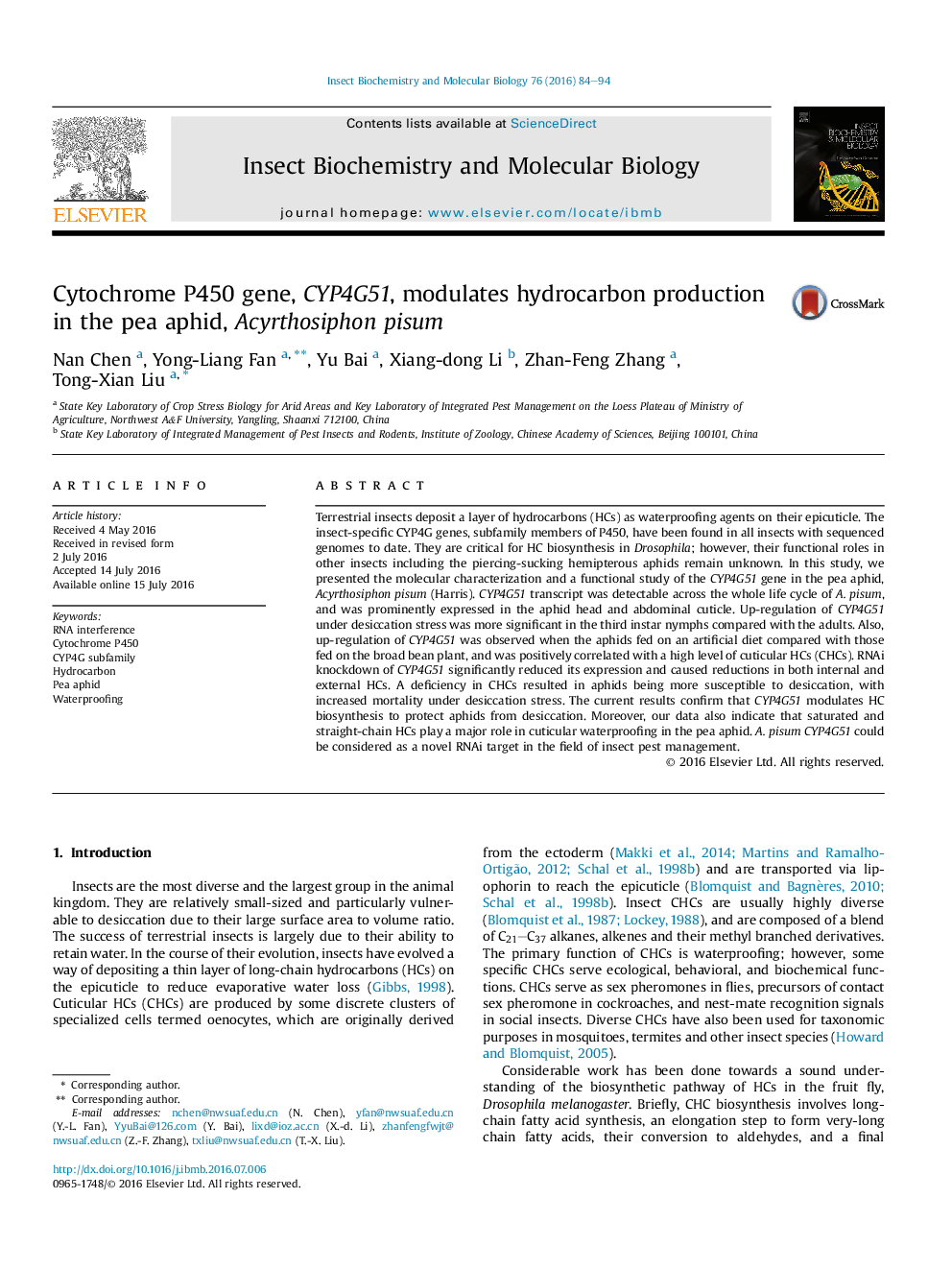| کد مقاله | کد نشریه | سال انتشار | مقاله انگلیسی | نسخه تمام متن |
|---|---|---|---|---|
| 1981954 | 1539476 | 2016 | 11 صفحه PDF | دانلود رایگان |
• Acyrthosiphon pisum CYP4G51 expression was up-regulated in response to desiccation stress.
• Up-regulation of CYP4G51 by an artificial diet was positively correlated with an increase in CHCs.
• RNAi knockdown of CYP4G51 resulted in a decrease in both the cuticular and internal HCs.
• CYP4G51-suppressed aphids showed an increase in mortality due to desiccation.
• Saturated and straight-chain CHCs are responsible for cuticular waterproofing in the pea aphid.
Terrestrial insects deposit a layer of hydrocarbons (HCs) as waterproofing agents on their epicuticle. The insect-specific CYP4G genes, subfamily members of P450, have been found in all insects with sequenced genomes to date. They are critical for HC biosynthesis in Drosophila; however, their functional roles in other insects including the piercing-sucking hemipterous aphids remain unknown. In this study, we presented the molecular characterization and a functional study of the CYP4G51 gene in the pea aphid, Acyrthosiphon pisum (Harris). CYP4G51 transcript was detectable across the whole life cycle of A. pisum, and was prominently expressed in the aphid head and abdominal cuticle. Up-regulation of CYP4G51 under desiccation stress was more significant in the third instar nymphs compared with the adults. Also, up-regulation of CYP4G51 was observed when the aphids fed on an artificial diet compared with those fed on the broad bean plant, and was positively correlated with a high level of cuticular HCs (CHCs). RNAi knockdown of CYP4G51 significantly reduced its expression and caused reductions in both internal and external HCs. A deficiency in CHCs resulted in aphids being more susceptible to desiccation, with increased mortality under desiccation stress. The current results confirm that CYP4G51 modulates HC biosynthesis to protect aphids from desiccation. Moreover, our data also indicate that saturated and straight-chain HCs play a major role in cuticular waterproofing in the pea aphid. A. pisum CYP4G51 could be considered as a novel RNAi target in the field of insect pest management.
Figure optionsDownload high-quality image (271 K)Download as PowerPoint slide
Journal: Insect Biochemistry and Molecular Biology - Volume 76, September 2016, Pages 84–94
